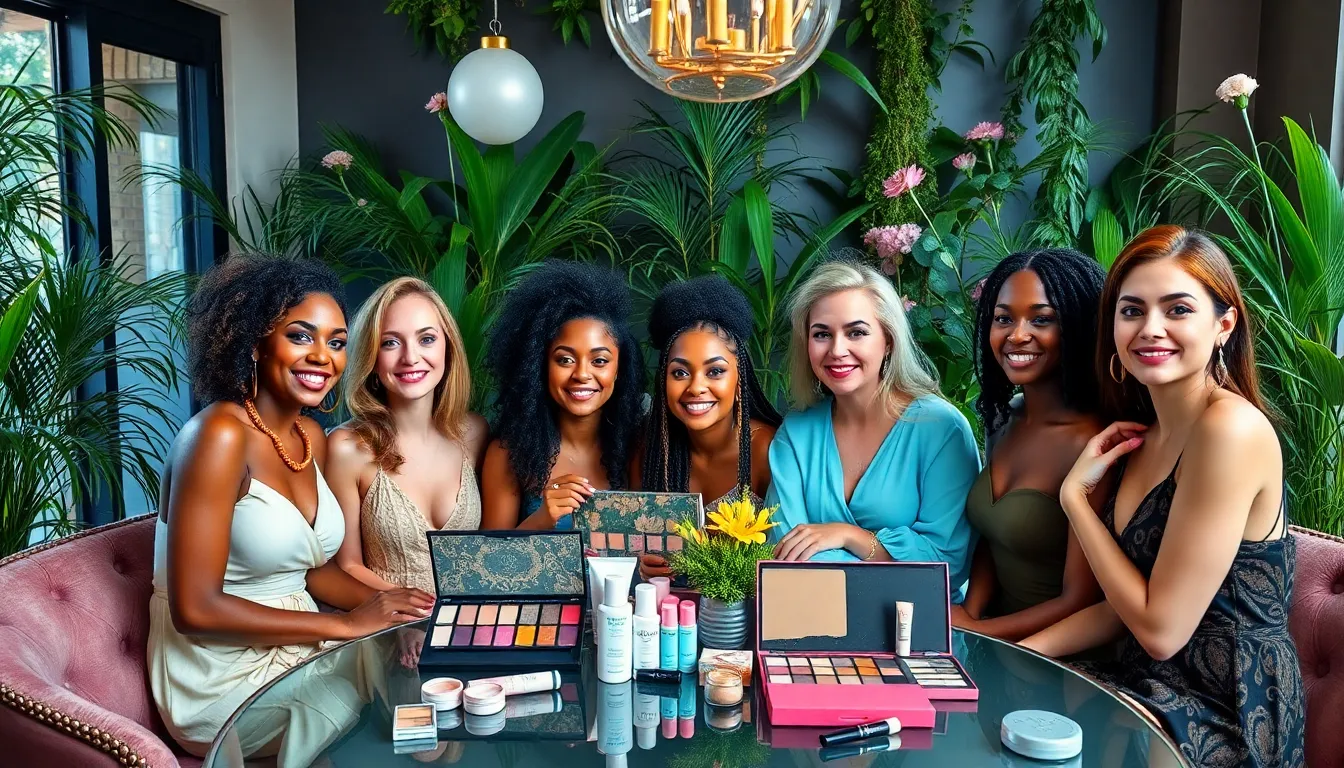In the ever-changing world of beauty, trends come and go faster than a TikTok dance challenge. From the latest skincare miracle to the hottest makeup collaborations, staying updated can feel like a full-time job—one that requires a lot of caffeine and maybe a little drama. But don’t worry; the beauty industry is here to keep things exciting, and it’s not just about the glitz and glam.
Table of Contents
ToggleLatest Trends in Beauty Industry News
The beauty industry is evolving rapidly, showcasing exciting new trends that capture attention. Keeping up with these developments can be daunting yet rewarding.
Eco-Friendly Products
Sustainable beauty products are gaining traction among consumers. Brands increasingly focus on eco-conscious formulations, packaging, and sourcing. For instance, 70% of beauty shoppers express interest in eco-friendly brands. Ingredients derived from natural sources appeal to environmentally conscious consumers, while refillable packaging solutions reduce waste. Transparency regarding sourcing practices enhances brand trust.
Innovations in Skincare Technology
Technological advancements are revolutionizing skincare routines. Devices like at-home LED masks and ultrasonic skin scrubbers become mainstream choices for consumers. Scanning technologies analyze skin conditions for tailored recommendations. In 2023, AI-powered skincare apps are expected to see a 25% increase in usage. These innovations offer personalized skincare experiences and drive consumer loyalty, reshaping beauty regimes across age groups.
Notable Brand Launches and Collaborations

Recent weeks have seen several exciting launches and collaborations in the beauty industry. These developments highlight the industry’s dynamic nature and its focus on innovation and sustainability.
Emerging Brands to Watch
New brands are consistently entering the beauty landscape. One standout is Youthforia, which specializes in makeup products that emphasize skincare benefits. Eco-conscious consumers are drawn to Kinship, known for its plant-based ingredients and commitment to sustainable packaging. Another noteworthy mention is Rare Beauty, founded by Selena Gomez, focusing on inclusivity and mental health awareness in beauty.
Influencer Collaborations
Influencer partnerships are increasingly shaping brand visibility. Huda Beauty recently teamed up with several beauty influencers to launch a limited-edition eyeshadow palette. This collaboration taps into the influencers’ engaged audiences, creating excitement and driving sales. Morphe also collaborated with popular TikTok creators, resulting in trend-driven product launches that resonate with younger demographics.
Regulatory Changes Impacting the Beauty Industry
Regulatory changes significantly affect the beauty industry. These updates emphasize safety and transparency, ensuring products meet consumer expectations.
New Safety Standards
New safety standards focus on consumer protection. The regulations require brands to adopt comprehensive safety testing for ingredients and formulations. Companies must demonstrate that their products do not cause harm, which boosts confidence among consumers. Authorities are increasing scrutiny on previously unregulated ingredients. As a result, brands that prioritize safety stand out in the marketplace, attracting consumers who value health-conscious choices.
Labeling Requirements
Labeling requirements are evolving to promote transparency. Regulations demand clear ingredient listings, allowing consumers to make informed decisions. Brands must present allergen information prominently to prevent adverse reactions. Furthermore, claims of sustainability and efficacy require substantiation. Accurate labeling fosters trust between brands and consumers. In response, brands are revamping labels to adhere to these new standards, ensuring compliance while enhancing appeal.
Consumer Behavior and Market Analysis
Consumer behaviors in the beauty industry reflect ongoing changes driven by various factors. Shifts in purchasing habits exhibit a strong preference for sustainable options among beauty shoppers, with 70% showing interest in eco-friendly brands. Consumers increasingly prioritize natural ingredients and refillable packaging in their purchasing decisions. Convenience plays a crucial role as well, with many leaning towards online shopping and subscription services for beauty products.
Social media platforms significantly impact consumer choices and brand visibility in the beauty sector. Brands leverage TikTok and Instagram to showcase products, leading to immediate consumer engagement. Influencer partnerships foster authentic connections, making products more relatable. Trends originating on these platforms often drive purchasing decisions, influencing buying behavior instantaneously. The visual nature of social media enhances the appeal of products, making them desirable and trendy among younger demographics.
The beauty industry continues to thrive amid rapid changes and evolving consumer preferences. With an increasing focus on sustainability and innovation brands are not only adapting but also setting new standards for what beauty means. The rise of eco-friendly products and cutting-edge technology showcases a commitment to enhancing the consumer experience while prioritizing safety and transparency.
As trends shift and new players emerge the excitement in the industry remains palpable. Influencer collaborations and social media engagement are reshaping how consumers connect with brands. This vibrant landscape ensures that beauty enthusiasts will always have something fresh and exciting to explore.




